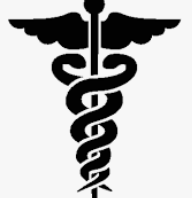All my life, weight has been an issue. The closest I have come to acceptable weight management is when I starved myself and added a ridiculous amount of exercise. I am too old to revert to starvation and mad exercising. I realize weight is a crucial factor to good health, so I am tackling it again but with minimal exercise, a daily walk and a meal plan created by AI. Let’s see where it goes. The immediate goal is to try it for just one week. I believe we all can stand just about anything for ONE WEEK. I am on Day 3…watch the calendar indicator on the front page….and send your support. I need all the help I can get.
Fundamentals of Calorie Counting for Weight Loss:
To lose weight, you generally need to consume fewer calories than you burn. Your body uses calories for essential functions (breathing, thinking) and daily activities (walking, talking, sleeping, eating). Excess calories are stored as fat, leading to weight gain. Calorie needs vary based on gender, age, weight, and activity level. Creating a calorie deficit (eating less than your body burns) is key for weight loss.
Evidence for Calorie Counting:
Scientific “overfeeding studies” consistently show that consuming more calories than you burn leads to weight gain. A 2022 study found that both calorie tracking and self-monitoring high-calorie foods led to significant weight loss.
Beyond Just Calories:
Calorie counting is one method; it may not work for everyone and isn’t the only way to maintain a healthy lifestyle. Always consider food quality, portion sizes, and your body’s fullness signals. Incorporating whole foods, exercising regularly, and maintaining good sleep hygiene are also crucial for weight loss.
Understanding Portion Sizes:
“Portion distortion” (viewing large servings as normal) can hinder weight loss. Calorie counting helps manage overeating by providing a better understanding of consumption.
Methods for measuring portions:
- Scales (most accurate)
- Measuring cups (quicker)
- Comparisons to common household items (less accurate but convenient)
Examples of portion comparisons:
1 cup leafy greens: a baseball
1/2 cup rice/pasta: a computer mouse or rounded handful
1/2 cup vegetables: a computer mouse
1/2 cup fresh fruit: a tennis ball
3 ounces meat: a deck of cards
3 ounces fish: a checkbook
1.5 ounces cheese: a lipstick tube or thumb size
2 tablespoons peanut butter: a ping-pong ball
1 teaspoon olive oil: 1 fingertip
Tips for Effective Calorie Counting:
- Calorie counting isn’t an exact science, but aim for accuracy.
- Be especially careful recording high-fat or high-sugar foods.
- Use a food scale initially to improve your estimation skills.
Additional tips:
Be prepared with a calorie-counting app/tool and meal plan.
Read food labels for portion and calorie information.
Aim for slow, steady weight loss.
Ensure you eat enough to fuel your exercise.
Important Considerations:
Consult a healthcare professional.
Even when counting calories, ensure you fulfill your daily energy needs.
